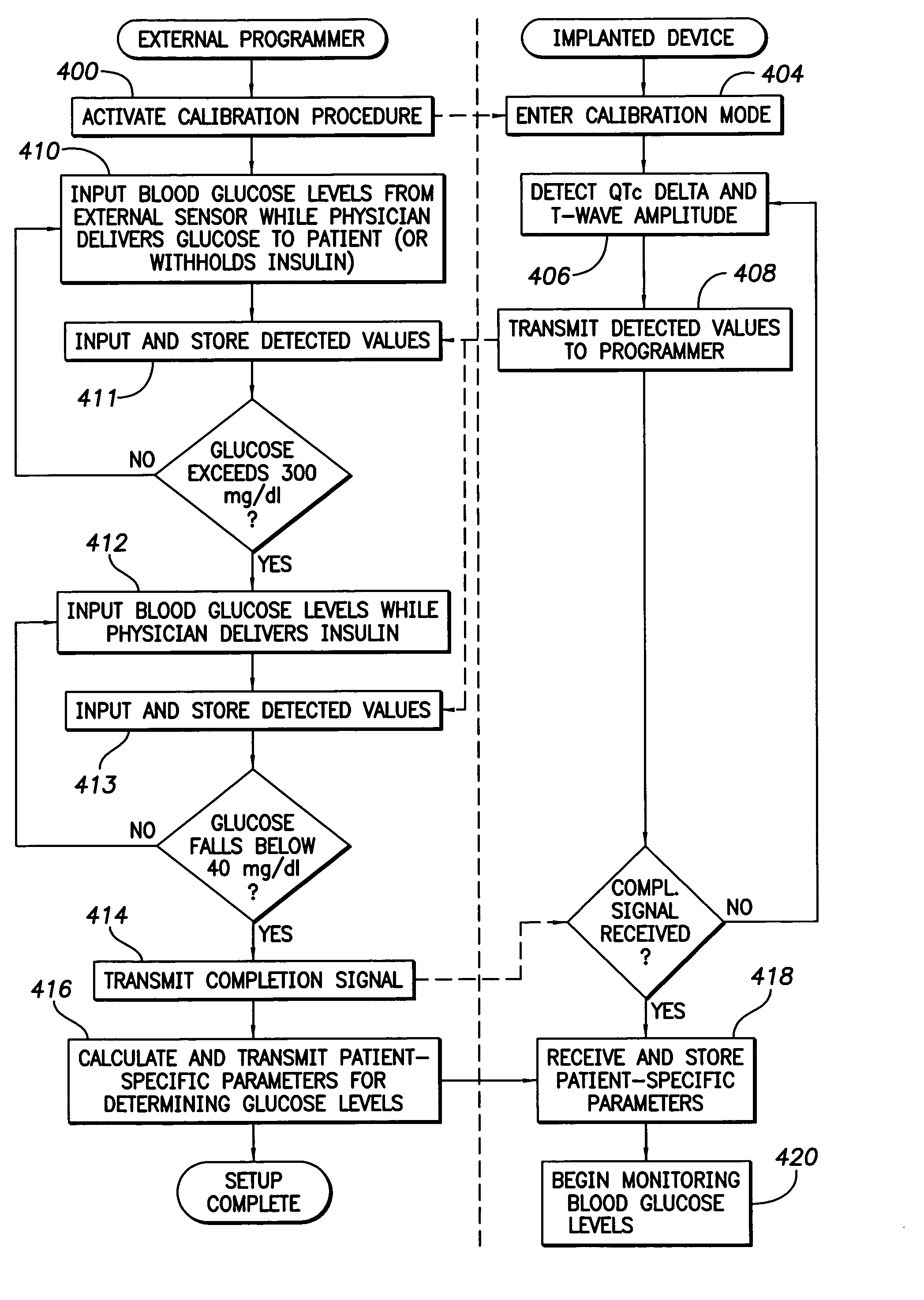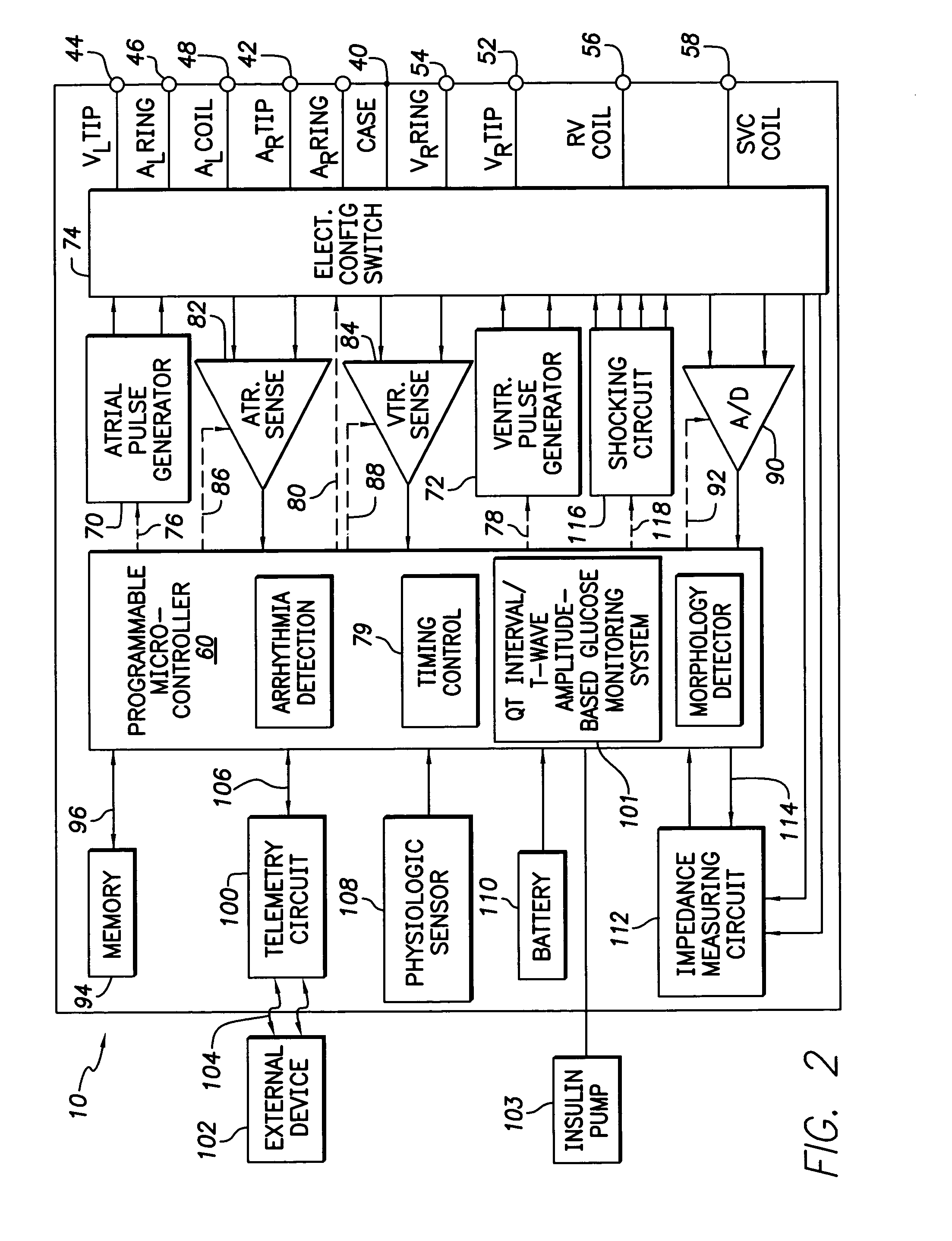System and method for monitoring blood glucose levels using an implantable medical device
a medical device and implantable technology, applied in the field of implantable medical devices, can solve the problems of preventing patients from periodically checking blood glucose levels, causing patients to be discouraged from monitoring blood glucose levels, and unable so as to achieve optimal blood glucose levels, blood glucose levels can be reliably and unambiguously detected
- Summary
- Abstract
- Description
- Claims
- Application Information
AI Technical Summary
Benefits of technology
Problems solved by technology
Method used
Image
Examples
example
[0077]A specific example of the relation between QTc delta values, T-wave amplitude fractions, and blood glucose levels will now to described with reference to FIGS. 6–8. FIG. 6 illustrates QTc delta values as a function of the blood glucose level for blood glucose levels in the range of 40 mg / dl to about 140 mg / dl. As can be seen, there is a substantially linear relationship between QTc delta and glucose level for glucose levels in the range of 40 mg / dl to about 90 mg / dl. Beyond about 90 mg / dl, QTc delta remains at zero regardless of the blood glucose level. Hence, QTc delta is effective for use as a proxy for blood glucose levels when the blood glucose level is below about 90 mg / dl but is ineffective otherwise. Hence, as explained above, QTc delta is employed in combination with T-wave amplitude fractions for determining blood glucose levels. However, in circumstances wherein blood glucose levels might only need to be determined for levels below about 90 mg / dl, then the QTc delta ...
PUM
 Login to View More
Login to View More Abstract
Description
Claims
Application Information
 Login to View More
Login to View More - R&D
- Intellectual Property
- Life Sciences
- Materials
- Tech Scout
- Unparalleled Data Quality
- Higher Quality Content
- 60% Fewer Hallucinations
Browse by: Latest US Patents, China's latest patents, Technical Efficacy Thesaurus, Application Domain, Technology Topic, Popular Technical Reports.
© 2025 PatSnap. All rights reserved.Legal|Privacy policy|Modern Slavery Act Transparency Statement|Sitemap|About US| Contact US: help@patsnap.com



